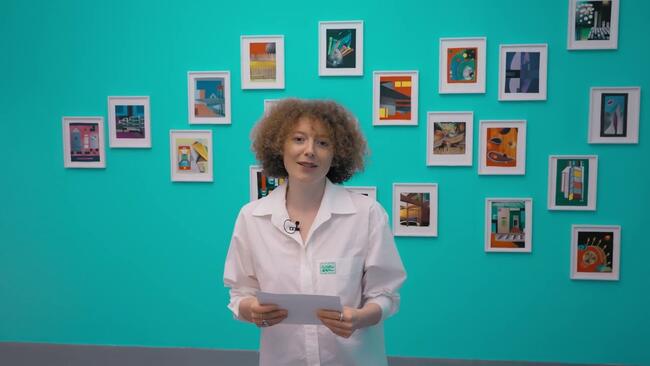
Elisabeth Wild
Museum Haus Konstruktiv presents the largest solo exhibition on the work of Elisabeth Wild (1922 Vienna, AT – 2020 Panajachel, GT) presented in a Swiss museum. It features around 180 small-format collages that the artist created from the turn of the millennium until shortly before her death, using elements from glossy magazines.
Over here, a concrete structure and inserted graphic color fields in blue and violet jointly generate an interesting interplay of two-dimensionality and depth effect; over there, an image of a sunset rotated by 90 degrees combines with primarily dark-red, dark-green and black semicircles, along with a dimly glowing dome shape, to produce a dream-like futuristic scene. These and many other compositions are presented on the fifth floor at Museum Haus Konstruktiv, where the wealth of variety that Elisabeth Wild achieved in her works on paper unfolds most impressively.
Wild turned to the medium of collage in the last two decades of her long and eventful life. Amid the lush vegetation of her adopted home of Panajachel in Guatemala, at a desk in the studio that was set up for her there, Wild created a collage almost every day. She took the required material from magazines devoted to fashion, art and architecture. The format depended on whatever motif the artist chose as the background image and carrier of the respective collage. With scissors, glue and a magnifying glass, as well as a keen sense of color, form and composition, Wild spent almost twenty years creating enigmatic visual worlds, which she referred to as Fantasías but gave no individual titles. Wild often positioned the delicate paper cutouts symmetrically in the image, interleaving them to create dense micro-worlds shifting between reality and illusion, in which seemingly surreal components appear just as often as geometric shapes, architectural elements, and excerpts from logos or other delightful finds; an intuitive and playful remix of (or foray through) stylistic devices from 20th-century art history and cultural history.
The exhibition is prolonged until January 15, 2023.
